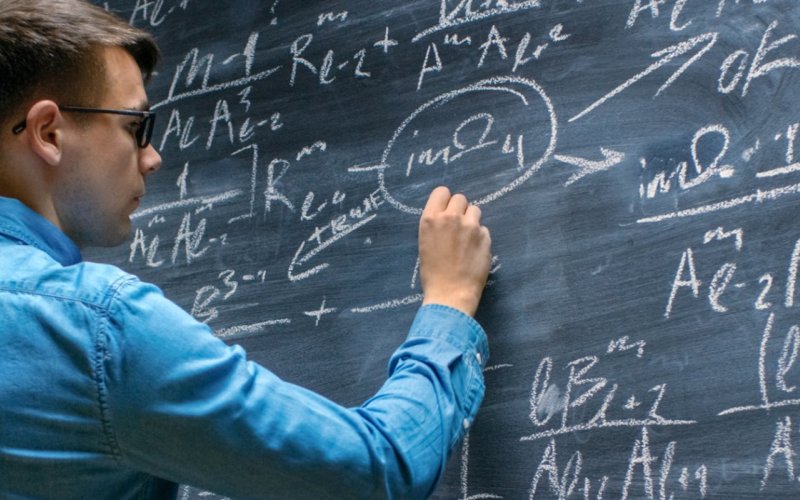Pi Day, March Madness and Everyday Mathematics

ALBANY, N.Y. (March 11, 2021) – The month of March is underway, which means the NCAA basketball tradition of March Madness is on the horizon. This year’s tournaments, set to begin on March 18 for men’s teams and March 21 for women’s teams, will hold special significance after the 2020 editions were canceled due to COVID-19.
It’s also the month in which we mark Pi Day, March 14 (3.14 – Pi’s approximation), an annual celebration of all things related to mathematics, especially enjoyed with a slice of a pie. The number Pi — also represented as the Greek letter π — is the ratio of a circle's circumference to its diameter, or the ratio of the area of the circle to the square of its radius.
The events may seem to have little in common at first glance, but for bracketologists attempting to correctly predict the outcome of 63 games played between 68 teams, the synergies are undeniable. According to ncaa.com’s Daniel Wilco, the odds of a getting a perfect NCAA bracket by flipping a coin or randomly guessing are 1 in 9,223,372,036,854,775,808 – that’s one in nine quintillion. For those with some expertise, the odds are closer to 1 in 120 billion. Either way, the statistical models are mathematically mind boggling. More broadly, they show how math plays a central role in our everyday lives.
At UAlbany, showcasing the role of mathematics in broader society is a central theme for Professor of Mathematics Cristian Lenart.
“Mathematics plays a crucial role in essentially all sciences, and beyond. Indeed, mathematics and the arts (music, dance, poetry, painting, sculpture, architecture etc.) have had a long historical relationship,” said Lenart, a 2014 winner of the SUNY Chancellor’s Award for Excellence in Scholarship and Creative Activities. “For instance, in my Transformation Geometry class, I tell my students that all 17 types of symmetries of wallpaper patterns were known to the Moors, in the decoration of the Alhambra palace.”
UAlbany’s mathematicians focus on areas of research such as probability and topology, as well as their applications to data science, machine learning, physics and cancer genomics. Their work points to how mathematics is integral to our everyday lives, whether we realize it or not.
The Department of Mathematics, under the leadership of Professor Michael Stessin, recently developed a master’s degree in data science, which is directed to applications of contemporary mathematical methods to artificial intelligence, robotics, internet security and similar fields.
Lecturer Michael Natole, who received his PhD from UAlbany in 2020, worked with Professor Yiming Ying and Stessin to develop mathematical methods of analysis of wildfires. They partnered with Geography and Planning Professor Andrei Lapenas and Associate Professor Alexander Buyantuev to use climatic, anthropogenic and landscape variables to determine the significant factors that lead to wildfires using spatial data. Natole is also using mathematical models to study the impact of climate change on coral reefs.
Members of the department’s machine learning group, which includes Ying, Assistant Professor Yunlong Feng and Assistant Professor Penghang Yin work in the areas of online learning, robust procedures and optimized algorithms.
Researchers such as Associate Professors Karin Reinhold and Carlos Rodriguez study probability and statistical interference. Assistant Professor Michael Lesnick, who primarily works on topological data analysis, is interested in how his work can be applied to biology. Associate Professor Boris Goldfarb, who also researches topology, examines how it can be applied to the study of artificial intelligence.
Assistant Professor Justin Curry’s work with topology has potential applications for NASA’s missions in aeronautics and space exploration. In October 2020, Curry secured a five-year contract with NASA Glenn Research Center valued at $650,000 to work on TIMAEUS: Topologically-Influenced Methods for Ad hoc, Evolving and Uncertain Systems.
Learn more about UAlbany’s Department of Mathematics and the master’s degree in Data Science program.




